Vibration Characteristic Analysis and Dynamic Reliability Modeling of Multi-Rotor UAVs
Abstract
1. Introduction
2. Modeling Theory of UAV Rotor Structures
2.1. The Actuator Disk Theory
2.2. The Blade Element Theory
2.3. The Standard Strip Analysis
3. Vibrational Model Based on Bidirectional Fluid–Structure Interaction
3.1. Rotor Dynamic Modeling
3.2. Rotor Vibration Analysis
4. UAV Dynamic Reliability Model
4.1. Second-Order Reliability Method (SORM)
4.2. Reliability Calculation Based on Laplace Method
5. Reliability Assessment of UAV System
5.1. Reliability Calculation of Single Rotor System
5.2. Reliability Assessment of Multi-Rotor System
5.2.1. Series System Reliability
5.2.2. Voting System Reliability
6. Conclusions
- A rotor CAD model was built based on momentum theory, blade element theory, and strip theory. A single-rotor vibration dynamic model considering bidirectional fluid-structure interaction was established. The results show that the rotor’s vibration response under aerodynamic load has significant spatiotemporal distribution characteristics. The blade tip displacement peak reaches 0.02553 mm, and the maximum stress in the root stress concentration area is 11.598 MPa. The vibration response enters a stable periodic state after 0.12 s;
- The single rotor reliability model based on vibration data shows that, under the given condition, the failure-free probability of the single rotor system is 93.10%. If this rotor is part of a multi-rotor redundant system, it shows that the failure probability during operation is low. This result confirms the high consistency between the Laplace method and Monte Carlo simulation.
- System reliability evaluation shows that more rotors reduce the reliability index in the multi-rotor series system. More rotors increase the reliability index in the voting system. In the voting model, the hexacopter system under the “3-out-of-6” redundancy configuration reaches higher reliability with greater redundancy. This result shows that redundancy design improves fault tolerance.
Author Contributions
Funding
Data Availability Statement
Conflicts of Interest
Appendix A
| Step | Description |
|---|---|
| Input | |
| 1 | Initialize ←small positive values (e.g., machine epsilon) |
| 2 | Repeat |
| 3 | Compute cumulative distribution function (CDF) of |
| 4 | Transform to standard normal space: |
| 5 | |
| 6 | |
| 7 | |
| 8 | |
| 9 | |
| 10 | Compute reliability index |
| 11 | Update : |
| 12 | Transform back: |
| 13 | ) |
| 14 | |
| 15 | |
| 16 | |
| 17 | Construct correction matrix: |
| 18 | |
| 19 | |
| 20 | Compute reliability: |
| Output | Reliability of the rotor |
References
- Dong, J.; Zhang, Y. Optimization of Autonomous UAV Control Technology based on Computer Algorithms. In Proceedings of the 2022 IEEE International Conference on Advances in Electrical Engineering and Computer Applications (AEECA), Dalian, China, 20–21 August 2022. [Google Scholar] [CrossRef]
- Xing, L.; Johnson, B.W. Reliability Theory and Practice for Unmanned Aerial Vehicles. IEEE Internet Things J. 2023, 10, 3548–3566. [Google Scholar] [CrossRef]
- Irfan, M.; Dalai, S.; Trslič, P.; Riordan, J.; Dooly, G. LSAF-LSTM-Based Self-Adaptive Multi-Sensor Fusion for Robust UAV State Estimation in Challenging Environments. Machines 2025, 13, 130. [Google Scholar] [CrossRef]
- Ali, Z.A.; Alkhammash, E.H.; Hasan, R. State-of-the-Art Flocking Strategies for the Collective Motion of Multi-Robots. Machines 2024, 12, 739. [Google Scholar] [CrossRef]
- Banerjee, P.; Ghimire, R.; Hale, E.J. Vibration Anomaly Detection by Clustering in Unmanned Aerial Vehicles. In Proceedings of the AIAA AVIATION Forum and Exposition 2023, San Diego, CA, USA, 12–16 June 2023. [Google Scholar]
- Grehan, J.; Ignatyev, D.; Zolotas, A. Fault Detection in Aircraft Flight Control Actuators Using Support Vector Machines. Machines 2023, 11, 211. [Google Scholar] [CrossRef]
- Fourlas, G.K.; Karras, G.C. A Survey on Fault Diagnosis and Fault-Tolerant Control Methods for Unmanned Aerial Vehicles. Machines 2021, 9, 197. [Google Scholar] [CrossRef]
- Wu, W.; Xia, R.; Qian, G.; Liu, Z.; Razavi, N.; Berto, F.; Gao, H. Mechanostructures: Rational mechanical design, fabrication, performance evaluation, and industrial application of advanced structures. Prog. Mater. Sci. 2023, 131, 101021. [Google Scholar] [CrossRef]
- Liu, R.; Liu, Y.; Zhang, Y. State-Space Method-Based Frame Dynamics Analysis of the Six-Rotor Unmanned Aerial Vehicles. World Electr. Veh. J. 2025, 16, 331. [Google Scholar] [CrossRef]
- Dai, Z.; Yuan, X.; Qian, F.; Feng, Z.; Li, Z. Sensitivity Analysis Regarding the Structural Parameters of the Inner Cylinder Embedded Fluidlastic Base. In Proceedings of the 8th Asia Conference on Mechanical Engineering and Aerospace Engineering (MEAE 2022), Wuhan, China, 9–11 June 2022. [Google Scholar] [CrossRef]
- Yang, P.; Wen, C.; Geng, H.; Liu, P. Intelligent Fault Diagnosis Method for Blade Damage of Quad-Rotor UAV Based on Stacked Pruning Sparse Denoising Autoencoder and Convolutional Neural Network. Machines 2021, 9, 360. [Google Scholar] [CrossRef]
- Li, W.; Zhang, S.; Lu, Z. An Investigation on UAV Vibration Control Based on Negative Poisson’s Ratio Metastructures. Aerospace Sci. Technol. 2025, 159, 109984. [Google Scholar] [CrossRef]
- Jiang, Y.; Sun, Y.; Shi, Y.; Wu, Y.; Zhang, S. Adaptive disturbance rejection control for vibration suppression of nonlinear flexible wings. Nonlinear Dyn. 2025, accepted. [Google Scholar] [CrossRef]
- Tian, J.; Yang, M.; Zhou, Z.; Chao, T. A Gaussian Process Regression-Based Robust Solution for the Narrow-Band Vibration Noise with Low-Cost UAV. Measurement 2025, 248, 116745. [Google Scholar] [CrossRef]
- Wang, K.; Yao, Y.; Liu, Y.; Guan, X.; Yu, Y.; Wang, J.; Wang, Y.; Li, T.; Cheng, T. Self-Powered System for Real-Time Wireless Monitoring and Early Warning of UAV Motor Vibration Based on Triboelectric Nanogenerator. Nano Energy 2024, 129, 110012. [Google Scholar] [CrossRef]
- Rauf, M.N.; Khan, R.A.; Shah, S.I.A. Design and Analysis of Stability and Control for a Small Unmanned Aerial Vehicle. Int. J. Dynam. Control 2024, 12, 1801–1816. [Google Scholar] [CrossRef]
- Meng, D.; Lv, Z.; Yang, S.; Wang, H.; Xie, T.; Wang, Z. A Time-Varying Mechanical Structure Reliability Analysis Method Based on Performance Degradation. Structures 2021, 34, 3247–3256. [Google Scholar] [CrossRef]
- Zhang, D.; Hao, Z.; Han, X.; Dai, S.; Li, Q. A New Probabilistic Transformation Technique for Evidence-Theory-Based Structural Reliability Analysis. Reliab. Eng. Syst. Saf. 2025, 258, 110891. [Google Scholar] [CrossRef]
- Shen, S.; Cheng, J.; Liu, Z.; Tan, J.; Zhang, D. Bayesian Inference-Assisted Reliability Analysis Framework for Robotic Motion Systems in Future Factories. Reliab. Eng. Syst. Saf. 2025, 258, 110894. [Google Scholar] [CrossRef]
- Meng, Y.; Zhang, D.; Shi, B.; Wang, D.; Wang, F. An Active Learning Kriging Model with Approximating Parallel Strategy for Structural Reliability Analysis. Reliab. Eng. Syst. Saf. 2024, 247, 110098. [Google Scholar] [CrossRef]
- Li, G.; Ma, S.; Zhang, D.; Yang, L.; Zhang, W.; Wu, Z. An Efficient Sequential Anisotropic RBF Reliability Analysis Method with Fast Cross-Validation and Parallelizability. Reliab. Eng. Syst. Saf. 2024, 241, 109600. [Google Scholar] [CrossRef]
- Liu, J.; Liu, X.; Li, L.; Chen, G.; Yang, D. Simultaneous determination of stochastic dynamic responses and reliabilities for geometrically nonlinear thin shells. Nonlinear Dyn. 2024, 112, 9783–9805. [Google Scholar] [CrossRef]
- Gan, N.; Wang, Q. Topology optimization design of improved response surface method for time-variant reliability. Adv. Eng. Softw. 2020, 146, 102828. [Google Scholar] [CrossRef]
- Zhang, Z.; Liu, H.; Wu, T.; Xu, J.; Jiang, C. A novel reliability-based design optimization method through instance-based transfer learning. Comput. Methods Appl. Mech. Eng. 2024, 432, 117388. [Google Scholar] [CrossRef]
- Chen, W.; Ni, B.; Tian, W.; Jiang, C. The first-order time-variant reliability expansion method. Struct. Saf. 2024, 109, 102484. [Google Scholar] [CrossRef]
- Yang, X.; Xie, L.; Wang, B.; Chen, J.; Zhao, B. Inference on the high-reliability lifetime estimation based on the three-parameter Weibull distribution. Probab. Eng. Mech. 2024, 77, 103665. [Google Scholar] [CrossRef]
- Wang, B.; Wang, Z.; Xie, L.; Gu, M.; Zhao, B.; Luo, W.; Yang, X. Multi-layer Statistical Analysis and Surrogate Model Based Fatigue Crack Growth Reliability Assessment of Lifting Lug Structure under Random Load History. Eng. Fract. Mech. 2024, 309, 110329. [Google Scholar] [CrossRef]
- Li, C.; Xie, L.; Xie, Y.; Gao, P. Equivalent characterization of initial crack size of blunt notched components based on test data and physical model. Theor. Appl. Fract. Mech. 2024, 131, 104439. [Google Scholar] [CrossRef]
- Thurlbeck, A.P.; Cao, Y. A Mission Profile-Based Reliability Modeling Framework for Fault-Tolerant Electric Propulsion. IEEE Trans. Ind. Appl. 2022, 58, 2312–2323. [Google Scholar] [CrossRef]
- Zhao, Z.; Lixie, L.; Zhao, B.; Song, J.; Wang, L. Reliability evaluation of folding wing mechanism deployment performance based on improved active learning Kriging method. Probabilistic Eng. Mech. 2023, 74, 103547. [Google Scholar] [CrossRef]
- Yang, M.; Zhang, H.; Zhang, D.; Wang, F.; Han, X. Efficient global adaptive Kriging approximation method in terms of moment for reliability-based design optimization. Comput. Methods Appl. Mech. Eng. 2025, 437, 117813. [Google Scholar] [CrossRef]
- Liang, Z.; Li, Q.; Fu, G. Multi-UAV collaborative search and attack mission decision-making in unknown environments. Sensors 2023, 23, 7398. [Google Scholar] [CrossRef] [PubMed]
- Breitung, K. Asymptotic approximations for multinormal integrals. J. Eng. Mech. 1984, 110, 357–366. [Google Scholar] [CrossRef]
- Roy, A.; Chakraborty, S. Support vector machine in structural reliability analysis: A review. Reliab. Eng. Syst. Saf. 2023, 233, 109126. [Google Scholar] [CrossRef]
- Pérez-Pérez, E.-J.; Puig, V.; López-Estrada, F.-R.; Valencia-Palomo, G.; Santos-Ruiz, I.; Samada, S.E. Robust fault diagnosis of wind turbines based on MANFIS and zonotopic observers. Expert Syst. Appl. 2023, 235, 121095. [Google Scholar] [CrossRef]
- Pérez-Pérez, E.-J.; Puig, V.; López-Estrada, F.-R.; Valencia-Palomo, G.; Santos-Ruiz, I.; Osorio-Gordillo, G. Fault detection and isolation in wind turbines based on neuro-fuzzy qLPV zonotopic observers. Mech. Syst. Signal Process. 2023, 191, 110183. [Google Scholar] [CrossRef]
- Kotarski, D.; Pranjić, M.; Alharbat, A.; Piljek, P.; Bjažić, T. Multirotor UAV—A Multidisciplinary Platform for Teaching Mechatronics Engineering. Sensors 2025, 25, 1007. [Google Scholar] [CrossRef] [PubMed]

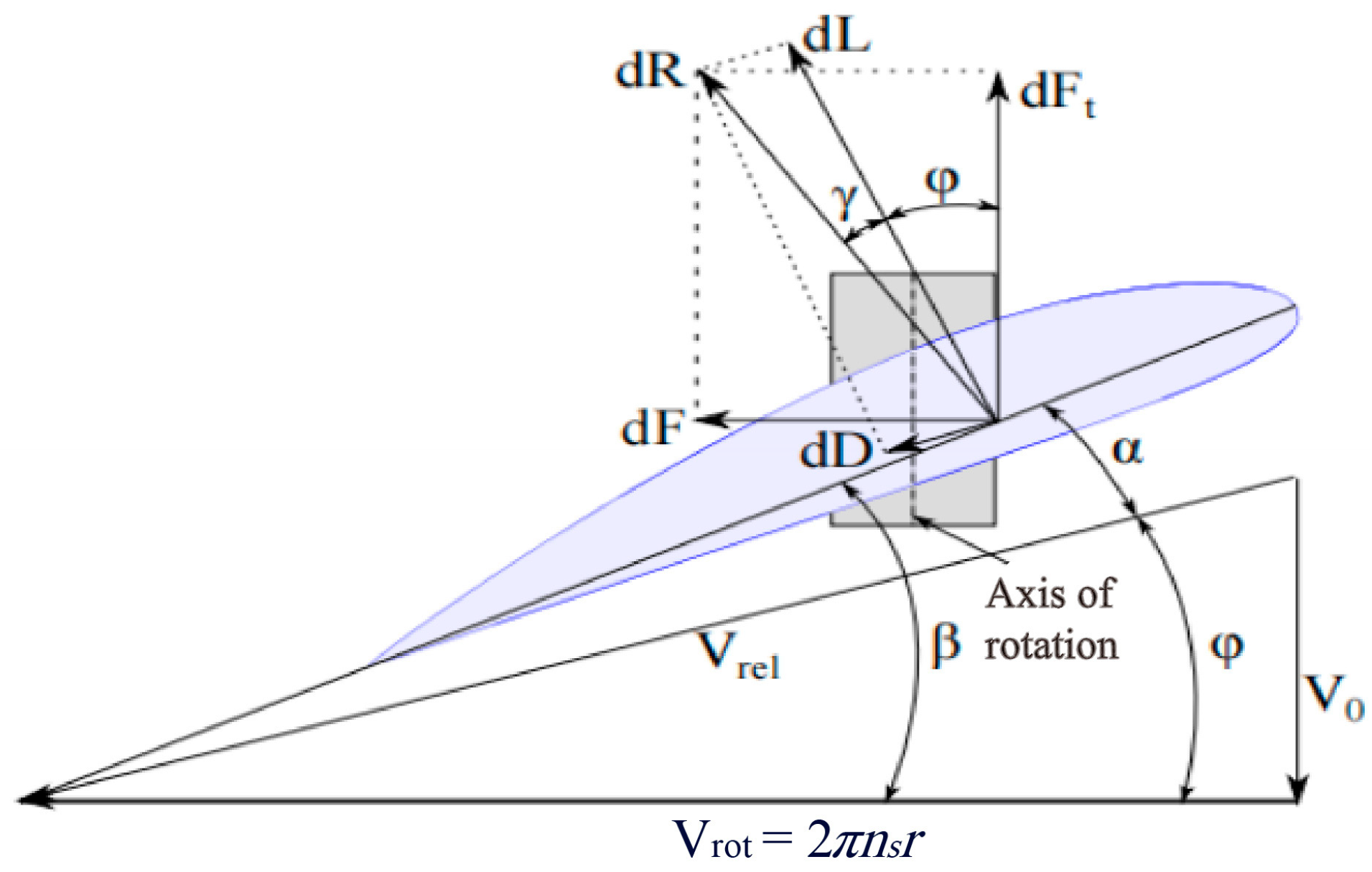
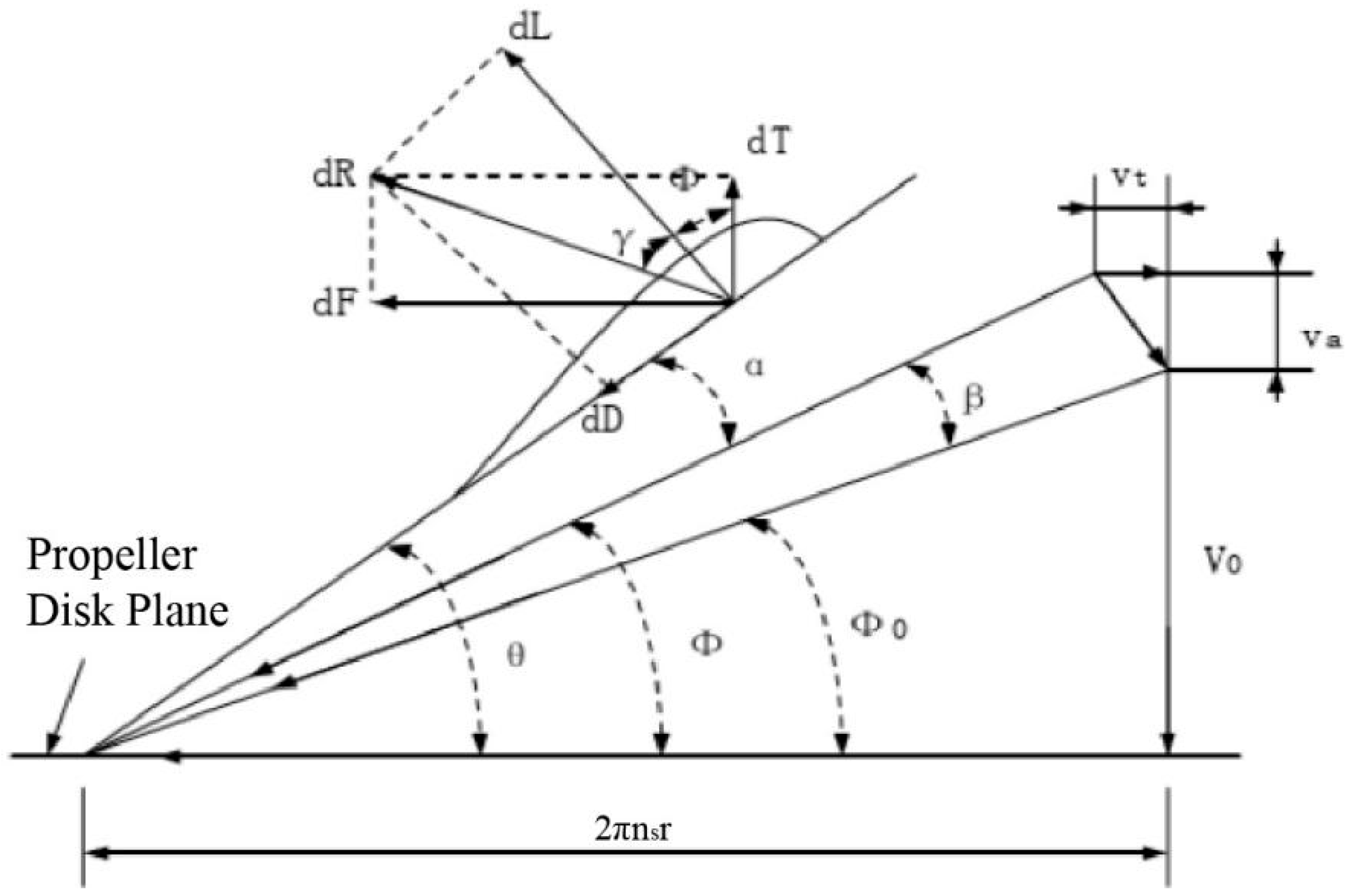
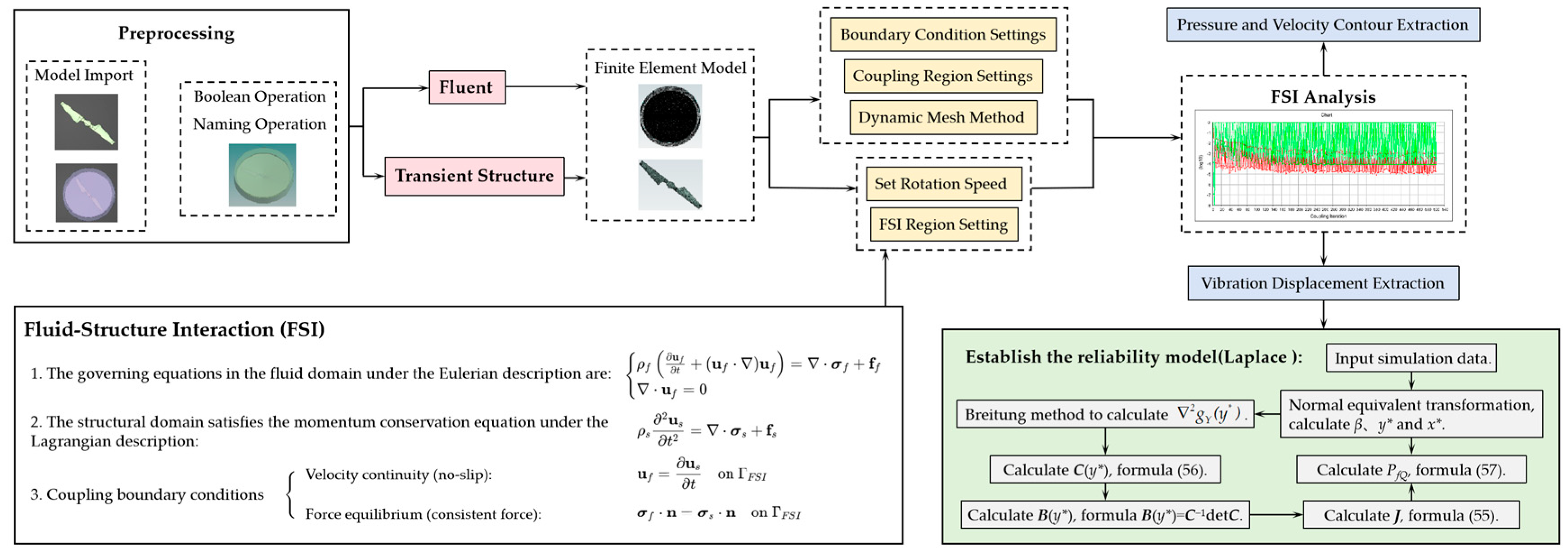

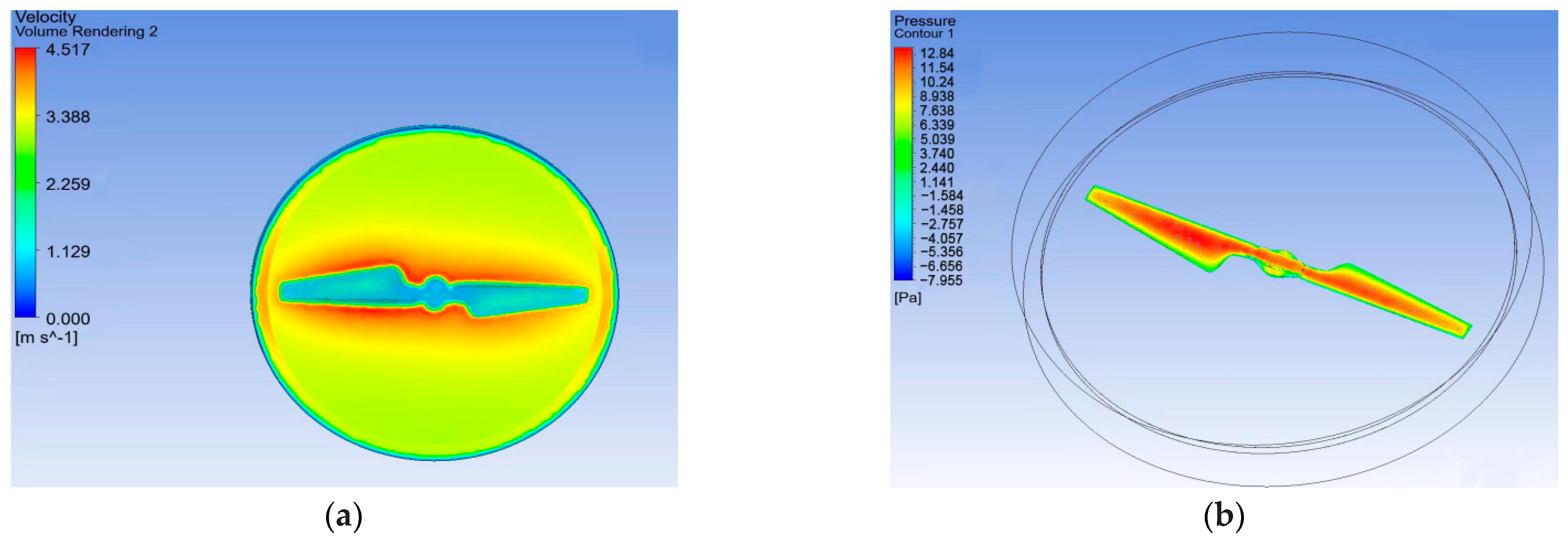

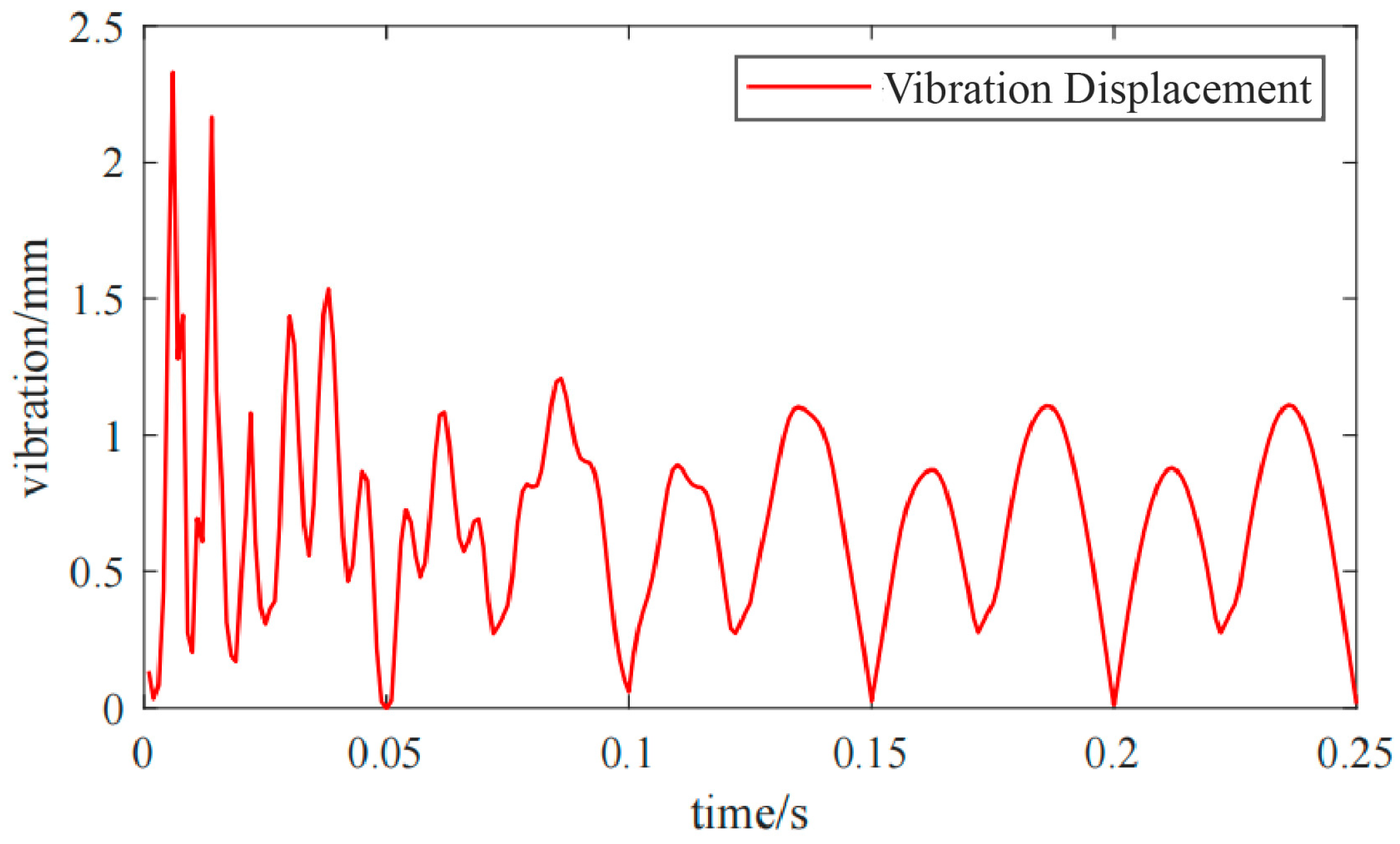
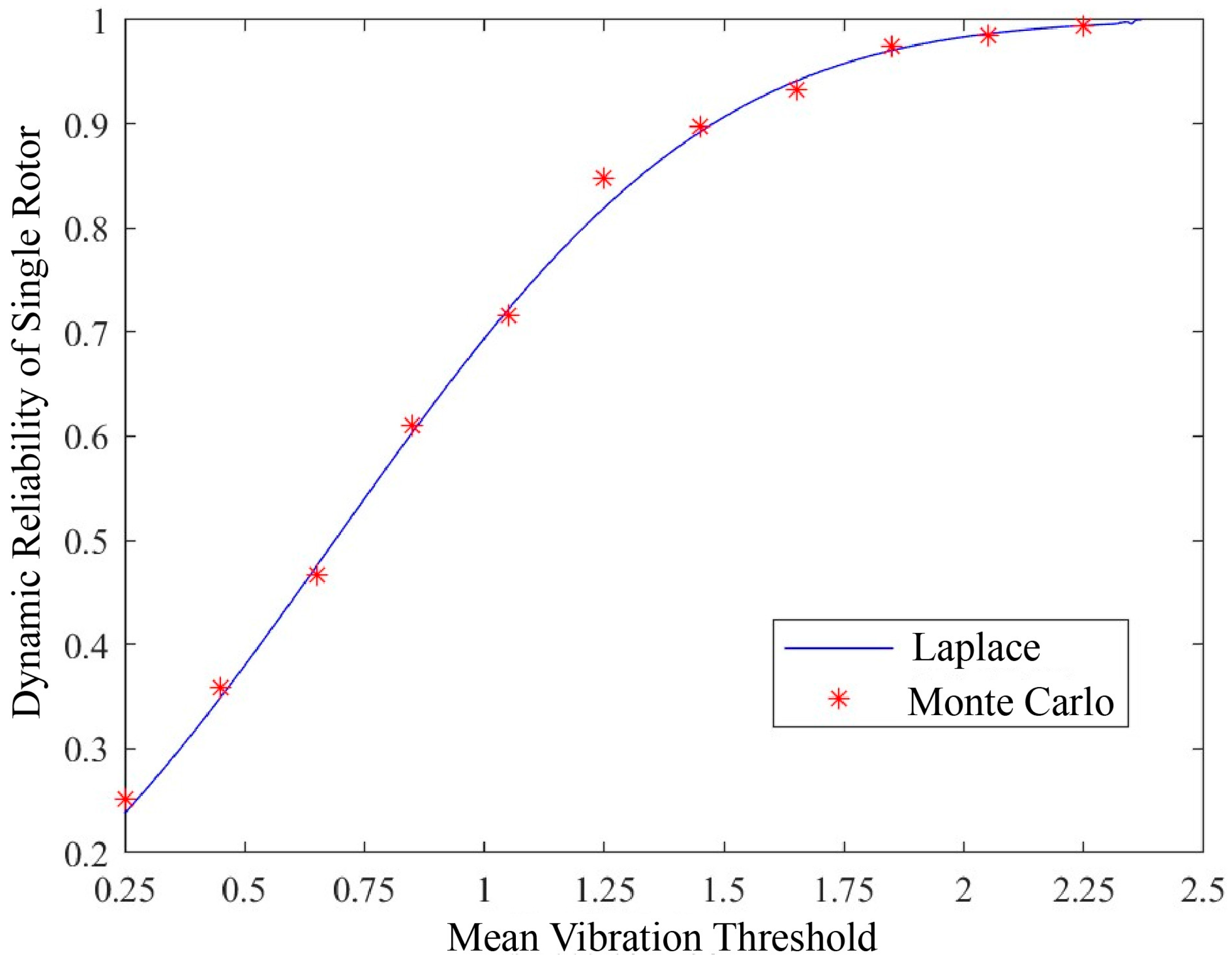


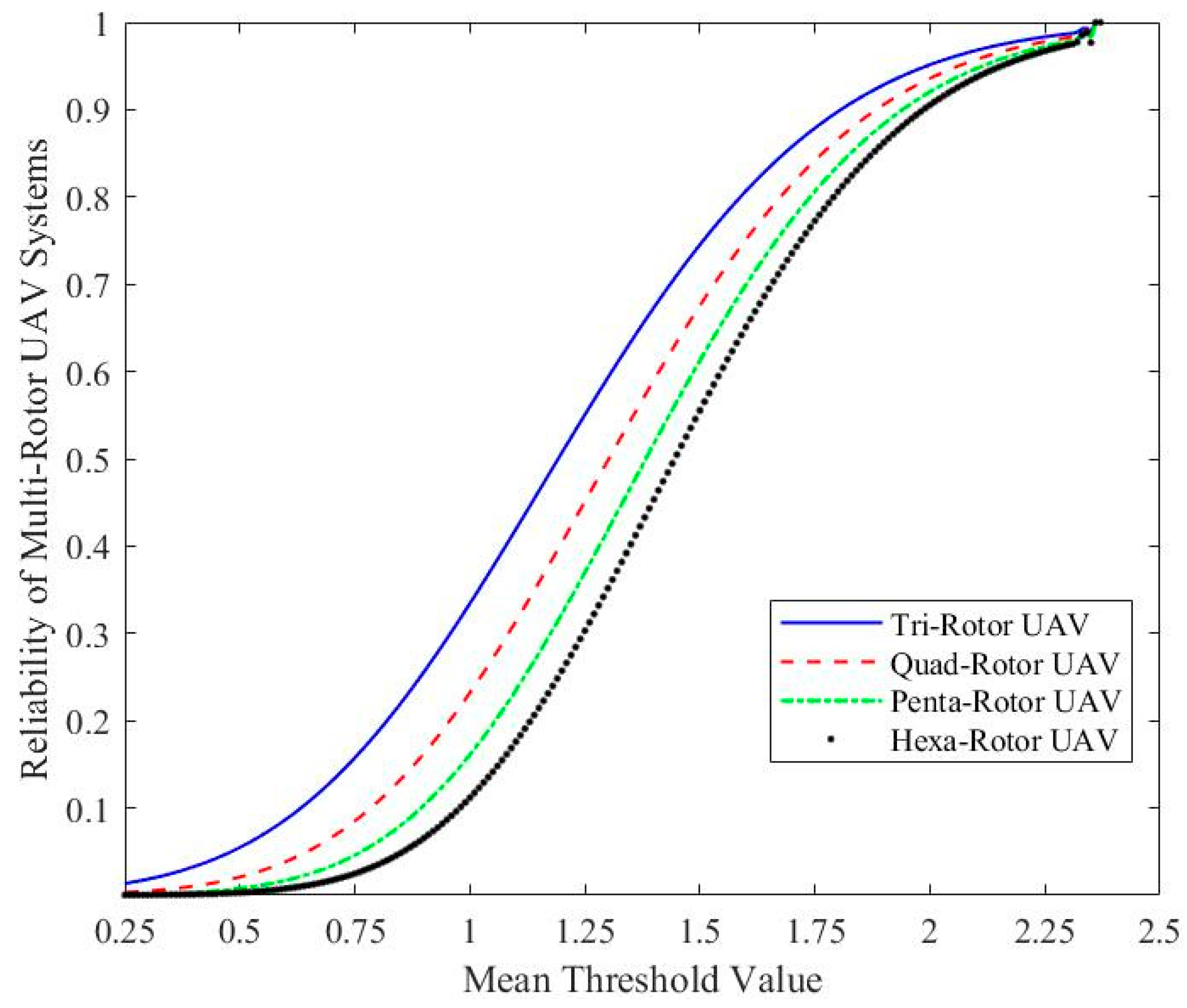
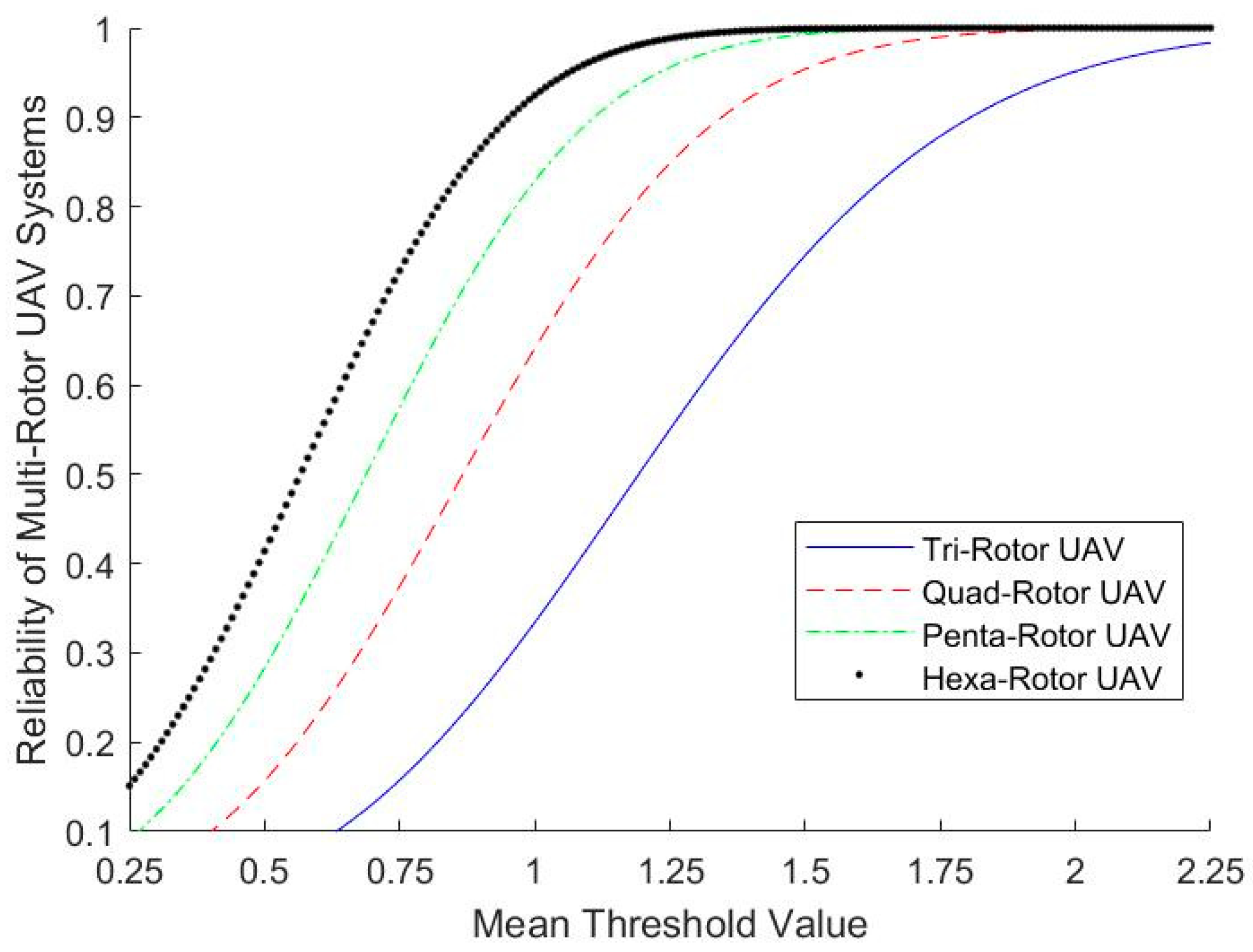
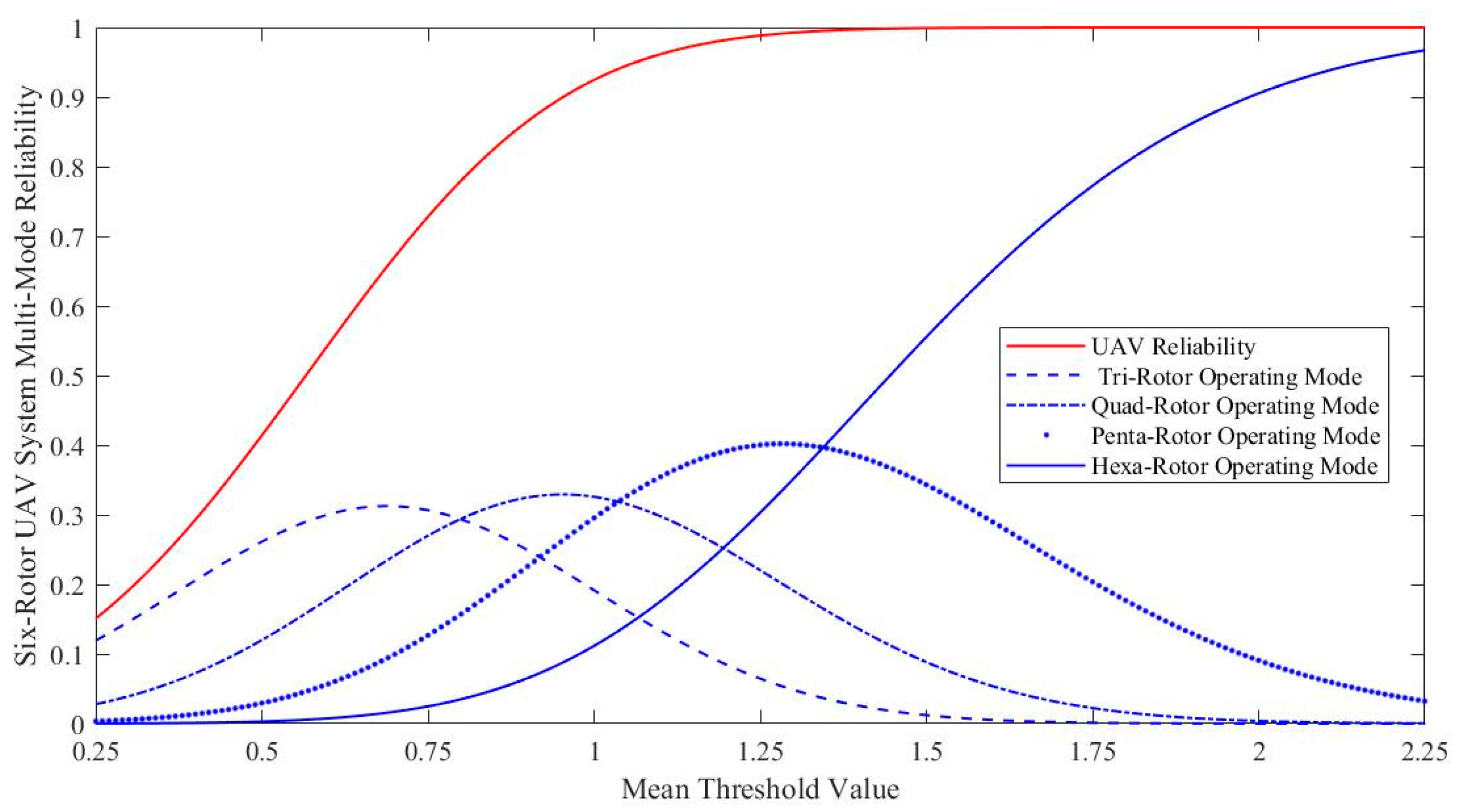
| Parameter | Value | Description |
|---|---|---|
| Rotor diameter | 20 mm | Tip-to-tip diameter of the rotor |
| Number of blades | 2 | Dual-blade configuration |
| Blade material | PA612 nylon | Polyamide 612 (engineering thermoplastic) |
| Density (ρ) | 1.07 g/cm3 | Material density |
| Young’s modulus (E) | 1.4~1.7 GPa | Depends on moisture and processing |
| Tensile strength | 60~80 MPa | Typical range for PA612 |
| Poisson’s ratio | 0.3~0.4 | Assumed value for nylon materials |
Disclaimer/Publisher’s Note: The statements, opinions and data contained in all publications are solely those of the individual author(s) and contributor(s) and not of MDPI and/or the editor(s). MDPI and/or the editor(s) disclaim responsibility for any injury to people or property resulting from any ideas, methods, instructions or products referred to in the content. |
© 2025 by the authors. Licensee MDPI, Basel, Switzerland. This article is an open access article distributed under the terms and conditions of the Creative Commons Attribution (CC BY) license (https://creativecommons.org/licenses/by/4.0/).
Share and Cite
Zhou, K.; Zhou, D.; Wang, X.; Guo, Y.; Chen, H. Vibration Characteristic Analysis and Dynamic Reliability Modeling of Multi-Rotor UAVs. Machines 2025, 13, 697. https://doi.org/10.3390/machines13080697
Zhou K, Zhou D, Wang X, Guo Y, Chen H. Vibration Characteristic Analysis and Dynamic Reliability Modeling of Multi-Rotor UAVs. Machines. 2025; 13(8):697. https://doi.org/10.3390/machines13080697
Chicago/Turabian StyleZhou, Keyi, Di Zhou, Xiru Wang, Yonglin Guo, and Huimin Chen. 2025. "Vibration Characteristic Analysis and Dynamic Reliability Modeling of Multi-Rotor UAVs" Machines 13, no. 8: 697. https://doi.org/10.3390/machines13080697
APA StyleZhou, K., Zhou, D., Wang, X., Guo, Y., & Chen, H. (2025). Vibration Characteristic Analysis and Dynamic Reliability Modeling of Multi-Rotor UAVs. Machines, 13(8), 697. https://doi.org/10.3390/machines13080697







